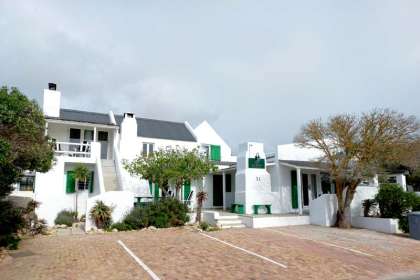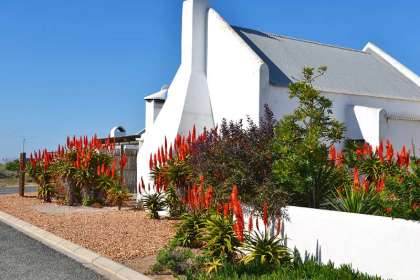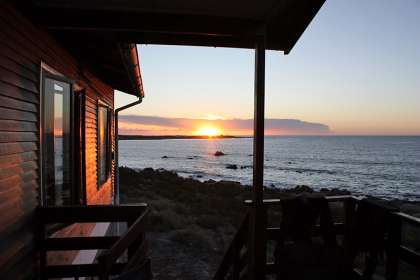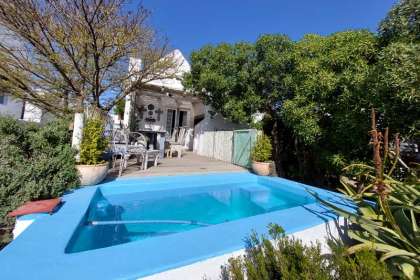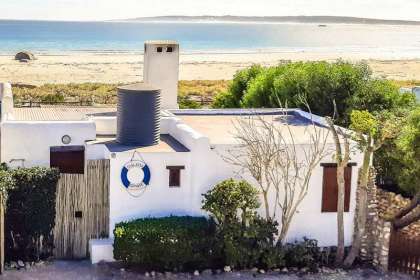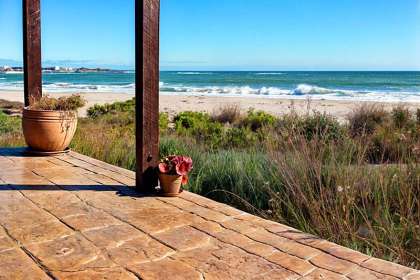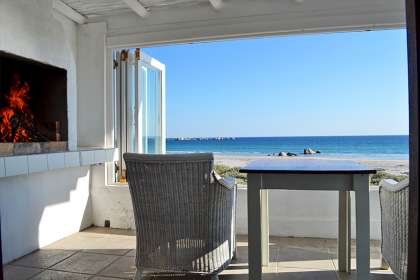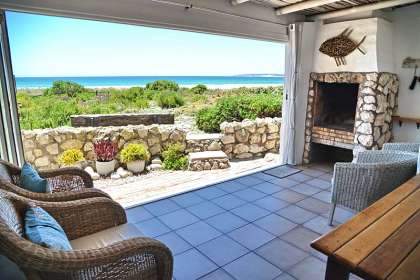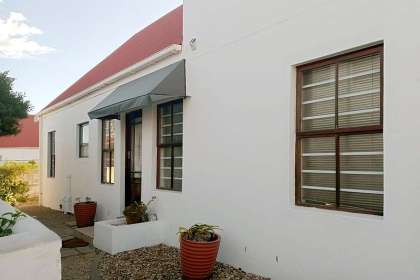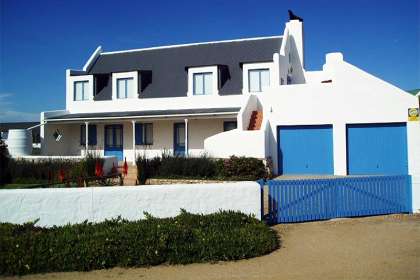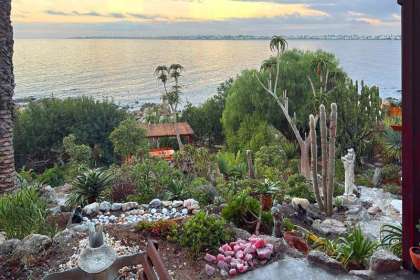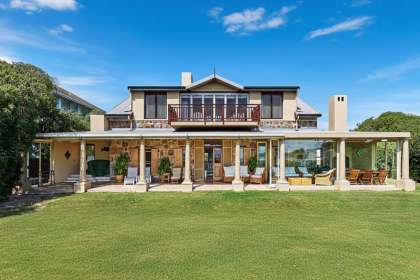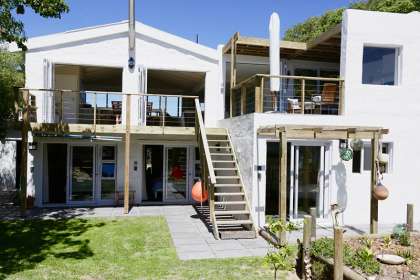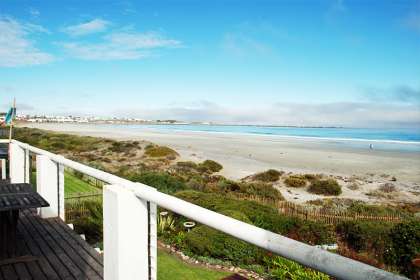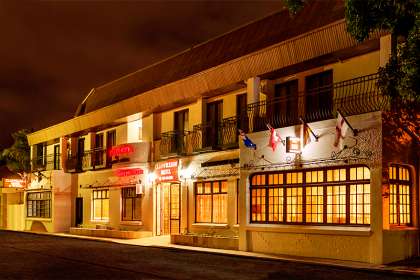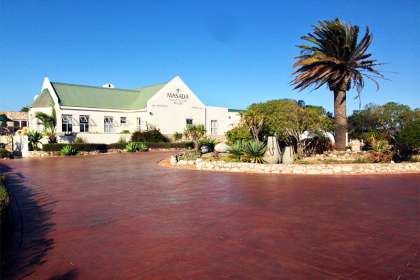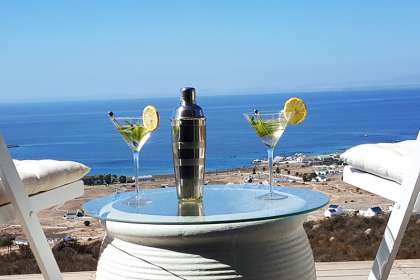Cape West Coast
Cape West Coast
The region known as the Cape West Coast stretches from just North of Cape Town as far as the border with the Northern Cape and inland following the Northern Cape border to Touws River, and including the Cederberg Range of mountains.
The main coastal town of the Cape West Coast is Saldanha which, together with the Bay of the same name, gets its name from the Portuguese admiral Antonio de Saldanha who anchored his fleet in what is now known as Table Bay in the year 1503, naming it after himself. It was not until 1601 that the name was transferred to its present location. Saldanha Bay played a very important role during the second World War as an assembly point for convoys because of its strategic position and safe anchorage. Today Saldanha Bay is an important iron ore export harbour as well as being an important fishing port. A brand new steel mill has recently been built in Saldanha and the bay houses the South African Military Academy and a naval training base.
Immediately to the South of Saldanha on the Cape West Coast lies Langebaan and the Langebaan Lagoon, home to the West Coast National Park. Here the still waters of the lagoon with its early morning mists shelter thousands of seabirds and vast concentrations of migrant waders that have flown here from the cold northern hemisphere winter. This 20000 hectare National Park includes the offshore islands of Schaapen, Malgas, Marcus and Jutten and the salt marsh and mud flats are home to tens of thousands of birds. Over one third of the world's population of Cape Gannet breed on Malgas Island.
To the East of the Cape West Coast and halfway to the Northern Cape border lie the Cederberg range of mountains along with the Cederberg Wilderness Area. This 71000 hectare area runs from the Pakhuis Pass and the Middleberg Pass. Visitors will need a permit to enter this area and these are issued by a forester at the Algeria Forest Station. These mountains were once covered with the rare Clanwilliam Cedar trees but many of these were either burnt or felled by early pioneers. The Cederberg are home to many natural rock formations, including a Maltese Cross, the Wolfberg Arch, Cathedral Rock and the Pulpit and Finger Rocks. The flora of the Cederberg are quite unique - the snow protea is found nowhere else on Earth.
The town of Wellington is in the extreme South of the Cape West Coast region lying in a valley known as Val du Charron, or Valley of the Wagon Makers after the trade of many of the early French Huguenots who settled in the area at the end of the 17th Century. There are several excellent wine cellars in the Wellington area where the visitor can enjoy wine tasting. Wellington offers the visitor a magical and captivating atmosphere and friendly people.
The town of Malmesbury, named after the first Earl of Malmesbury, is a few kilometers to the northwest of Wellington. Originally developed around a hot spring and drawing a huge number of visitors to its baths, these have fallen into disuse and are now part of a large shopping complex. The surrounding areas draw crowds of visitors from all over the world in Springtime to view the breathtaking sight of millions of wildflowers.
Think of fresh seafood, combine it with the Cape West Coast and you will be drawn to Lambert's Bay, a seafood mecca just a couple of hours' drive to the North of Cape Town. Lambert's Bay is a holiday venue set among some of the most breathtaking scenery of South Africa. Just off the coast here is Bird Island, home to seals, penguins and cormorants and bird watchers from all over the world.
The Cape West Coast of South Africa is a beautiful and diverse region known for its stunning landscapes, charming coastal towns, and rich cultural heritage.
Here are ten things to do or see on the Cape West Coast:
1. West Coast National Park: Explore this stunning park known for its spring wildflower displays, scenic landscapes, and abundant birdlife. Don't miss the Langebaan Lagoon, perfect for water sports and birdwatching.
2. Darling: Visit the charming town of Darling, famous for its wildflowers, Darling Brew craft beer, and the annual Darling Wildflower Show. The town is also home to the Evita se Perron theatre, where you can catch a show by the famous satirist Pieter-Dirk Uys.
3. Paternoster: Stroll through this picturesque fishing village with white-washed cottages, enjoy fresh seafood at local restaurants, and relax on the beautiful sandy beaches. Paternoster is one of the oldest fishing villages on the West Coast.
4. West Coast Fossil Park: Discover ancient fossils at this UNESCO World Heritage Site near Langebaan. The park offers guided tours that provide insights into the rich paleontological history of the area, showcasing fossils that are millions of years old.
5. Langebaan: Enjoy the vibrant town of Langebaan, known for its lagoon, which is ideal for water sports like kite surfing, sailing, and kayaking. The town also offers great dining options and a relaxed atmosphere.
6. Yzerfontein: Relax in this tranquil coastal village known for its long stretches of sandy beaches and peaceful ambiance. It's a great spot for beachcombing, fishing, and enjoying the natural beauty of the coastline.
7. Saldanha: Visit the largest natural bay in South Africa, offering excellent opportunities for sailing, fishing, and birdwatching. The area is also home to a naval base and a commercial port.
8. Elands Bay: Explore this laid-back surfing spot known for its consistent waves and pristine beaches. The nearby Verlorenvlei estuary is a haven for birdwatchers, with over 180 bird species recorded.
9. Cederberg Mountains: Venture inland to the rugged Cederberg Mountains, known for their dramatic rock formations, ancient San rock art, and hiking trails. The area is also famous for its rooibos tea plantations.
10. Hopefield: Experience the historic town of Hopefield, home to the annual Hopefield Fynbos Show. The town also features the impressive Fossil Museum, showcasing prehistoric animal fossils found in the region.
The Cape West Coast offers a diverse range of activities and sights, from natural beauty and outdoor adventures to cultural experiences and culinary delights, making it a must-visit destination in South Africa.
- Paternoster
- Langebaan
- St. Helena Bay
- Britannia Bay
- Yzerfontein
- Citrusdal
- Saldanha
- Velddrif
- Cederberg Region
- Clanwilliam
Die Opstal House with Apartments
Self Catering Apartment, Flatlet Accommodation in Paternoster
Cape West Coast
Die Opstal House with Apartments has gone in for a little facelift! It is a purposely designed functional architectural style house based on a historical West Coast Fisherman's cottage with 5 apartments around the swimming pool. …see more for bookings / enquiries and info.
Aloe Halt
Self Catering House, Cottage, Chalet Accommodation in Paternoster
Cape West Coast
Aloe Halt offers up to 6 guests the opportunity to stay in a spacious, yet intimate cottage about 160m from the beach. Walkways ensure easy access to the beach. Relax on the patio and enjoy the birdlife attracted by the various indigenous aloes in the gar …see more for bookings / enquiries and info.
Mangochi Beach Cottage
Self Catering House, Cottage, Chalet Accommodation in Britannia Bay
Cape West Coast
Set on the northern point of Britannia Bay and less than 50m from the curling waves, Mangochi is a typical West Coast timber beach house - that rare breed of place where crayfish diving, mussel hunting and fishing is the order of the day. …see more for bookings / enquiries and info.
Hocus Pocus @ Paternoster
Self Catering House, Cottage, Chalet Accommodation in Paternoster
Cape West Coast
Hocus Pocus is a self catering cottage (sleeps 4) in Bek Bay, Paternoster. Simple but functional architectural style house based on the historical West Coast Fisherman's cottages as seen all around Paternoster. …see more for bookings / enquiries and info.
Pampoen Fontein
Self Catering House, Cottage, Chalet Accommodation in Porterville
Cape West Coast
Pampoen Fontein farm offers self catering accommodation in the Porterville area, Cape West Coast. Pampoen Fontein Farm is situated on a plateau high in the Olifants River Mountains two hours from Cape Town. We offer complete peace and quiet within a thous …see more for bookings / enquiries and info.
Thalassa
Self Catering House, Cottage, Chalet Accommodation in Paternoster
Cape West Coast
Thalassa offers self catering accommodation on the beachfront in Voorstrand, Paternoster. The endless sandy beaches invite you to go on long walks where often one can spot dolphins, seals and whales. Bird life is rich and the sacred ibis can also be seen. …see more for bookings / enquiries and info.
Die Strandhuisie
Self Catering House, Cottage, Chalet Accommodation in Britannia Bay
Cape West Coast
Exquisite & Unique Self-catering Accommodation. Come and experience the West Coast at its best. Located in the picturesque seaside village of Britannia Bay... …see more for bookings / enquiries and info.
La Mer
Self Catering Apartment, Flatlet Accommodation in Paternoster
Cape West Coast
La Mer is a flatlet offering self catering accommodation in Voorstrand, Paternoster on the Cape West Coast. The name La Mer means 'the sea' offers guests the opportunity to stay right on the beach in the peaceful fisherman's village of Paternoster. …see more for bookings / enquiries and info.
J'aime la Mer
Self Catering House, Cottage, Chalet Accommodation in Paternoster
Cape West Coast
J'aime la Mer (I Love the Sea), offers up to 4 guests the opportunity to stay right on the beach in the beautiful fisherman's village of Paternoster. Only fifteen meters from the high-water mark, this ideally situated free standing self-catering cottage.. …see more for bookings / enquiries and info.
Anchor Bay
Self Catering House, Cottage, Chalet Accommodation in Langebaan
Cape West Coast
Anchor Bay, a home away from home, is a self-catering house (sleeps 7) located in the small lagoon town of Skiathos, Langebaan on the Cape West Coast. Anchor Bay is within walking distance of Club Mykonos, the beach and Laguna Mall. …see more for bookings / enquiries and info.
Whimseagull
Self Catering House, Cottage, Chalet Accommodation in Jacobs Bay
Cape West Coast
Whimseagull offers self catering accommodation (sleeps 6) in Jacobs Bay, Cape West Coast. Come replenish your soul in a fully equipped holiday home in idyllic Jacobsbaai - as it is known locally. In a world where proper planning is valued, this is one occ …see more for bookings / enquiries and info.
Villa Oasis
Self Catering House, Cottage, Chalet Accommodation in Britannia Bay
Cape West Coast
Villa Oasis is located in Britannia Bay, St Helena Bay on the West Coast. This self-catering villa can accommodate 6 guests in 3 bedrooms (1 king, 2 singles and a bunk bed comprising 1 three quarter and 1 single). …see more for bookings / enquiries and info.
Greystones Beach House
Self Catering House, Cottage, Chalet Accommodation in Langebaan
Cape West Coast
On the beach front, close to restaurants and shops, Greystones Beach House provides luxury self-catering accommodation for eight people. Ideally situated for watersports, bird life and wild flowers of Langebaan Lagoon. …see more for bookings / enquiries and info.
Sandpipers
Self Catering House, Cottage, Chalet Accommodation in Langebaan
Cape West Coast
Sandpipers offers wonderful self catering accommodation in Langebaan, Cape West Coast. Experience the splendor of Langebaan, situated 122km from Cape Town on the banks of the lagoon, alongside the West Coast National Park. …see more for bookings / enquiries and info.
Ceol na Mara
Self Catering House, Cottage, Chalet Accommodation in Paternoster
Cape West Coast
Ceol na Mara, right on the beach with superb views over Paternoster Bay, is a star-graded self catering house. It sleeps up to six and has garage parking, outside braai, fully equipped kitchen. The adjoining flat, Ceoleen sleeps up to 4. …see more for bookings / enquiries and info.
Coen's Place
Self Catering House, Cottage, Chalet Accommodation in Britannia Bay
Cape West Coast
Coen's Place is a self-catering home that is located on the "absolute" beachfront in the town of Britannia Bay, St Helena Bay, Cape West Coast. This is a large family home with no frill or fuss, spacious living areas for family and friends enjoying... …see more for bookings / enquiries and info.
Clanwilliam Hotel
Hotel / Boutique Hotel Accommodation in Clanwilliam
Cape West Coast
Clanwilliam Hotel provides hotel accommodation in Clanwilliam, Cape West Coast. Ensconced in the magical Oliphant's River Valley, Clanwilliam Hotel is situated off the beaten track. Only two hours drive from Cape Town, the hotel offers air-conditioned... …see more for bookings / enquiries and info.
Lewens-Essens B&B
Bed & Breakfast Accommodation in Yzerfontein
Cape West Coast
Lewens-Essens B&B offers bed and breakfast accommodation in Yzerfontein, Cape West Coast. Looking to take a break from the rush of the city? Then come and relax in Yzerfontein - a jewel on the West Coast. At Lewens Essens B&B you can savor the... …see more for bookings / enquiries and info.
Masada Guest House
Bed & Breakfast Accommodation in Langebaan
Cape West Coast
Situated on an enormous equestrian estate overlooking the north side of Saldanha Bay, privately owned Masada Guest House offers the greatest accommodation in Langebaan in a laid back country style atmosphere... …see more for bookings / enquiries and info.
The Lazy Daisies
Self Catering Apartment, Flatlet Accommodation in St. Helena Bay
Cape West Coast
The Lazy Daisies provides self catering accommodation in St Helena Bay on the Cape West Coast. From it's lofty position on top of the hill on the peninsula, The Lazy Daisies affords you the unique opportunity to enjoy both the sunrise and the sunset... …see more for bookings / enquiries and info.

 East of Vanrhynsdorp, on the road to Kobee. ©
East of Vanrhynsdorp, on the road to Kobee. ©  The fishing village at Yzerfontein has been redeveloped in recent years and is now a booming tourist destination. ©
The fishing village at Yzerfontein has been redeveloped in recent years and is now a booming tourist destination. © 